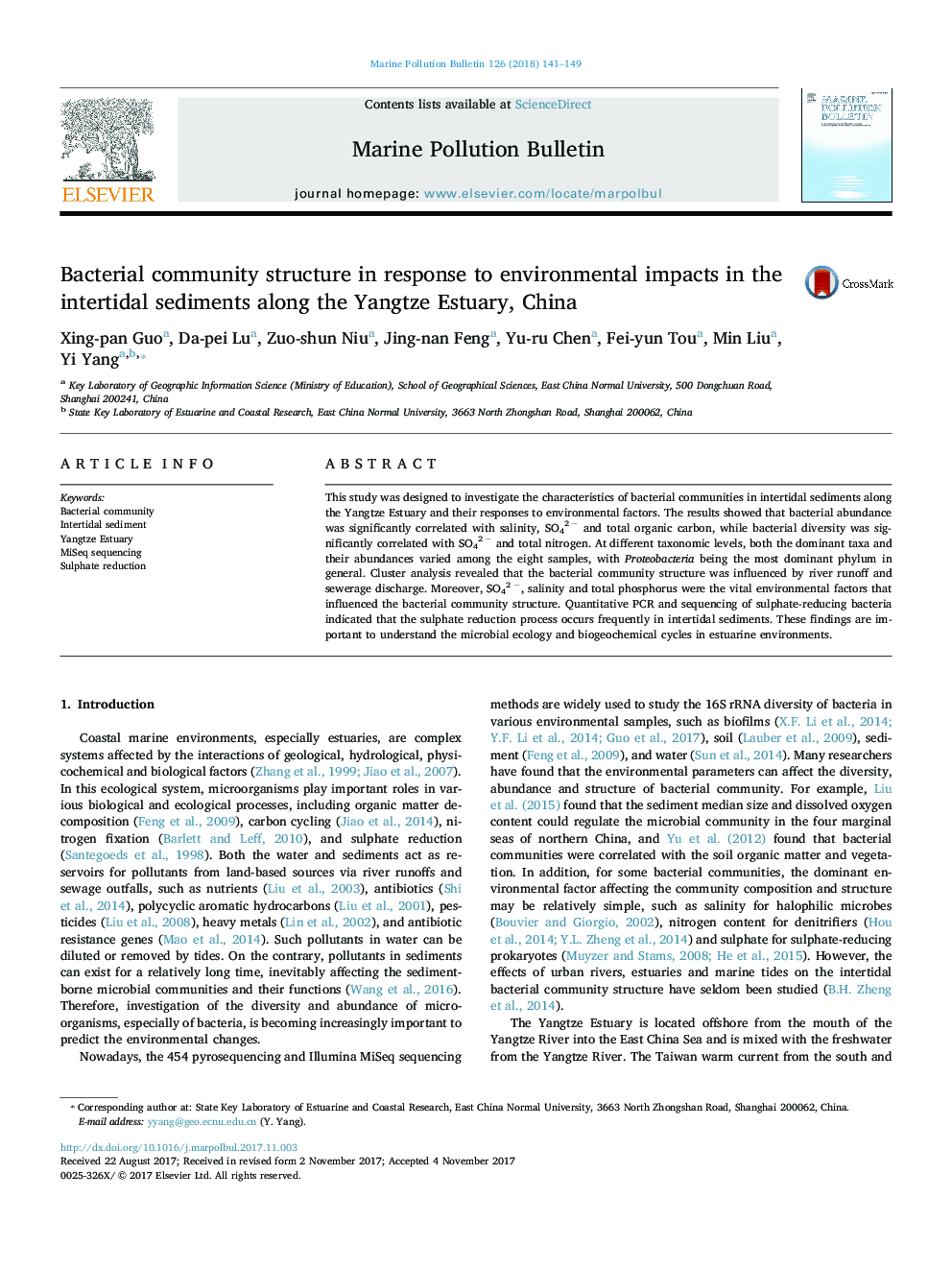| Article ID | Journal | Published Year | Pages | File Type |
|---|---|---|---|---|
| 8871818 | Marine Pollution Bulletin | 2018 | 9 Pages |
Abstract
This study was designed to investigate the characteristics of bacterial communities in intertidal sediments along the Yangtze Estuary and their responses to environmental factors. The results showed that bacterial abundance was significantly correlated with salinity, SO42Â â and total organic carbon, while bacterial diversity was significantly correlated with SO42Â â and total nitrogen. At different taxonomic levels, both the dominant taxa and their abundances varied among the eight samples, with Proteobacteria being the most dominant phylum in general. Cluster analysis revealed that the bacterial community structure was influenced by river runoff and sewerage discharge. Moreover, SO42Â â, salinity and total phosphorus were the vital environmental factors that influenced the bacterial community structure. Quantitative PCR and sequencing of sulphate-reducing bacteria indicated that the sulphate reduction process occurs frequently in intertidal sediments. These findings are important to understand the microbial ecology and biogeochemical cycles in estuarine environments.
Related Topics
Physical Sciences and Engineering
Earth and Planetary Sciences
Oceanography
Authors
Xing-pan Guo, Da-pei Lu, Zuo-shun Niu, Jing-nan Feng, Yu-ru Chen, Fei-yun Tou, Min Liu, Yi Yang,
